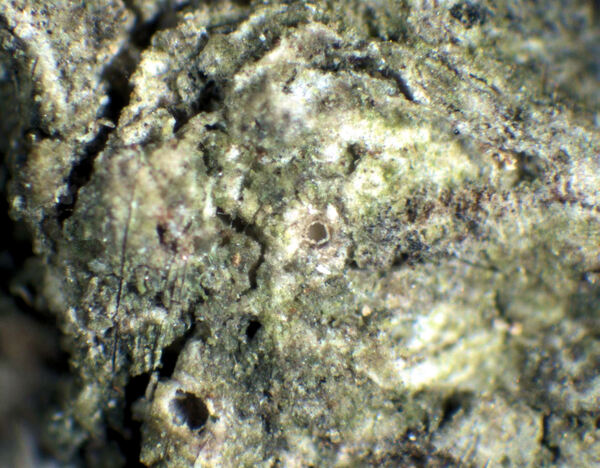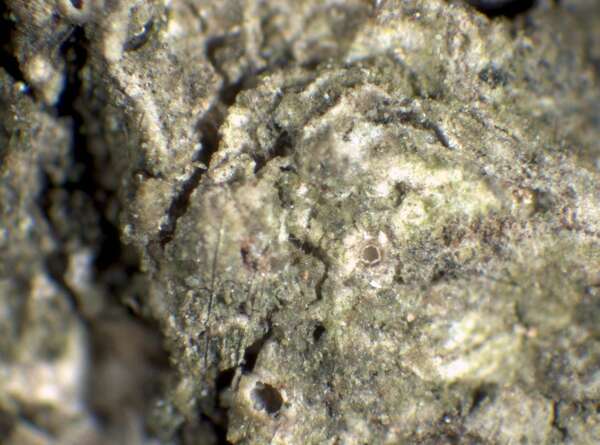Ramonia luteola Vězda
Folia Geobot. Phytotaxon., 2: 311, 1967.
Synonyms:
Distribution: N - Emil (Loppi & al. 2004c, Fariselli & al. 2020). C - Tosc (Senese & Critelli 2000, Loppi & al. 2004c), Abr (Gheza & al. 2021).
Description: Thallus crustose, ecorticate, greenish white, finally often disappearing. Apothecia circular in outline, semi-immersed to superficial, pale yellow, at first almost perithecioid and opening through a minute pore, later widening to 0.3-0.5 mm. Proper exciple more or less colourless, of angular cells; hymenium colourless, I-, K/I- or I+ blue in upper part; paraphyses unbranched, slender, 1.5-2 mm thick, the apical cells slightly thicker; hypothecium colourless. Asci 8-spored, clavate to cylindrical, rounded at apex, thin-walled, with an amyloid exoascus without a ring structure. Ascospores 7-septate, hyaline, fusiform, 20-27 x 4-6 µm, with a thick gelatinous perispore. Photobiont trentepohlioid. Spot tests: K-, C-, KC-, P-, UV-. Chemistry: without lichen substances.
Note: on trunks of deciduous trees in humid and shaded situations; hitherto known from humid areas of Central Europe. It likely belongs to Karstenia (see Cannon & al. 2024). It is included in the Italian red list of epiphytic lichens as “Vulnerable” (Nascimbene & al. 2013c).
Growth form: Crustose
Substrata: bark
Photobiont: Trentepohlia
Reproductive strategy: mainly sexual
Most common in areas with a humid-warm climate (e.g. most of Tyrrenian Italy)
Commonnes-rarity: (info)
Alpine belt: absent
Subalpine belt: absent
Oromediterranean belt: absent
Montane belt: extremely rare
Submediterranean belt: absent
Padanian area: absent
Humid submediterranean belt: extremely rare
Humid mediterranean belt: extremely rare
Dry mediterranean belt: absent

Predictive model
Herbarium samples
Growth form: Crustose
Substrata: bark
Photobiont: Trentepohlia
Reproductive strategy: mainly sexual
Most common in areas with a humid-warm climate (e.g. most of Tyrrenian Italy)
Commonnes-rarity: (info)
Alpine belt: absent
Subalpine belt: absent
Oromediterranean belt: absent
Montane belt: extremely rare
Submediterranean belt: absent
Padanian area: absent
Humid submediterranean belt: extremely rare
Humid mediterranean belt: extremely rare
Dry mediterranean belt: absent

Predictive model
| Herbarium samples |
 Index Fungorum
Index Fungorum
 GBIF
GBIF




